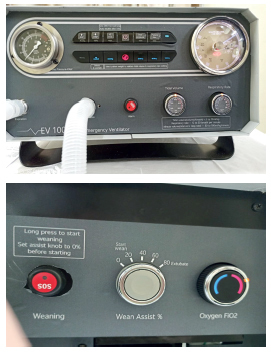
Jawa returns, this time as a breath of life
by Kumaran PBengaluru doctor awaits clinical approval for Covid-19 ventilator moderated by him
What do automobiles have to do with ventilators, that crucial equipment to treat severe Covid-19 cases? A lot, if you see the new ventilator design moderated by a Bengaluru doctor, that has a Jawa motorcycle’s pressure gauge, an auto’s battery and a Bolero’s central console.
Say Jawa Yezdi and it takes people on a trip down memory lane. Monish HP, an entrepreneur says, “I am come from a family of bike enthusiasts. Jawa was my first bike. I now own the new Jawa and it is exhilarating to know that my favourite bike brand will be a part of ventilator which can save lives. I couldn’t feel more proud as a Kannadiga for the company which started manufacturing the bike in Mysuru and took it global.”
In mid-March, it was felt that India would probably require lakhs of ventilators when Covid-19 cases would rise in May. Pre-empting this and the need for ventilators, a team
from Mahindra & Mahindra approached a Mysuru-based ventilator manufacturer to collaborate and build ventilators. Now if the ventilator designed by this team gets approved, over three lakh ventilators can be manufactured in a few months.
Dr Jagadish Hiremath, intensivist and managing director of Ace Suhas Hospital and Ace Embedded Intensive Care Units Private Ltd, said, “India was not making ventilators but importing the components - sensors, blowers and valves mostly from the US, Sweden or France. Then companies would put them in a console, add brand names and sell them as manufactured in India.”
But this was not a foolproof way of going about it, says Dr Hiremath. “What would happen if there was a disruption in the supply chain? With the imports about 5000 ventilators could be made per year, a number that is far less than what we need now.”
It was this situation that prompted Skanray and Mahindra and Mahindra to come up with an idea to create a ventilator out of auto components. Dr Hiremath’s role as a domain expert in ventilator design development and its use in ICU was crucial.
“We are starting to build our eco-system now. I am working with two projects currently - one with two PSUs and the other is with the Mahindra & Mahindra. One PSU is re-designing the sensors and the other is manufacturing the oxygen blenders,” said Dr Hiremath.
First they chose components of cars, bikes, tractors and other vehicles. “The Mahindra & Mahindra design team did a fantastic job in creating a ventilator prototype as per the design philosophy established by the Skanray team and I moderated the task. The ventilator is robust and the prototype was tested by me, after which it has been sent for approvals to the Hindustan Latex Limited (HLL),” said Dr Hiremath.

The doctor said the high-precision work was challenging for him and the team.
Auto parts
“We are using Jawa motorcycle’s products to make the pressure gauge. The bike’s speedometer will tell the doctor how much oxygen s going inside the patient’s lungs, what is his lung output and what is the variation of pressure inside the patient’s lungs,” he said. The analog dial needles move up and down and show the level of oxygen.
The Mahindra Auto battery has been used to give power back up to the ventilator.
The front console of the Bolero has been used to set the tidal volume. Tidal volume means the amount of air that we inhale and exhale with each breath. For the alarm, again the Jawa’s speedometer has been used. “If the patient is breathing slower or faster than normal, if there is a disconnection in the power supply, or if there is a disconnection in the tube that goes to the patient - all these are indicated by the Jawa speedometer console,” he added.
Keep it simple
The ventilator has only one mode, instead of 12 to 15. “We have decided to have one stable mode - Pressure Regulated Volume Control (PRVC) mode,” said Hiremath. He said that this mode is a time-tested mode because it has been used for more than three decades in ICUs across the world.
He said that to take the patient off the ventilator, there is something called the weaning method. “We designed and developed the weaning mode too. This we called the ‘Proportional Assist Mode’ which means we challenge the patient by reducing the support given to him by 20 per cent of his minute volume. For example, if the patient is breathing 7 litres a minute, we reduce it by 20 per cent (1.5 litres) and then see how the patient will breathe,” he said.
When the patient is able to beat this challenge, then he can be taken off the ventilator. He said the ventilator does not look conventional, but it does the job and can be made in bulk if situation demands.